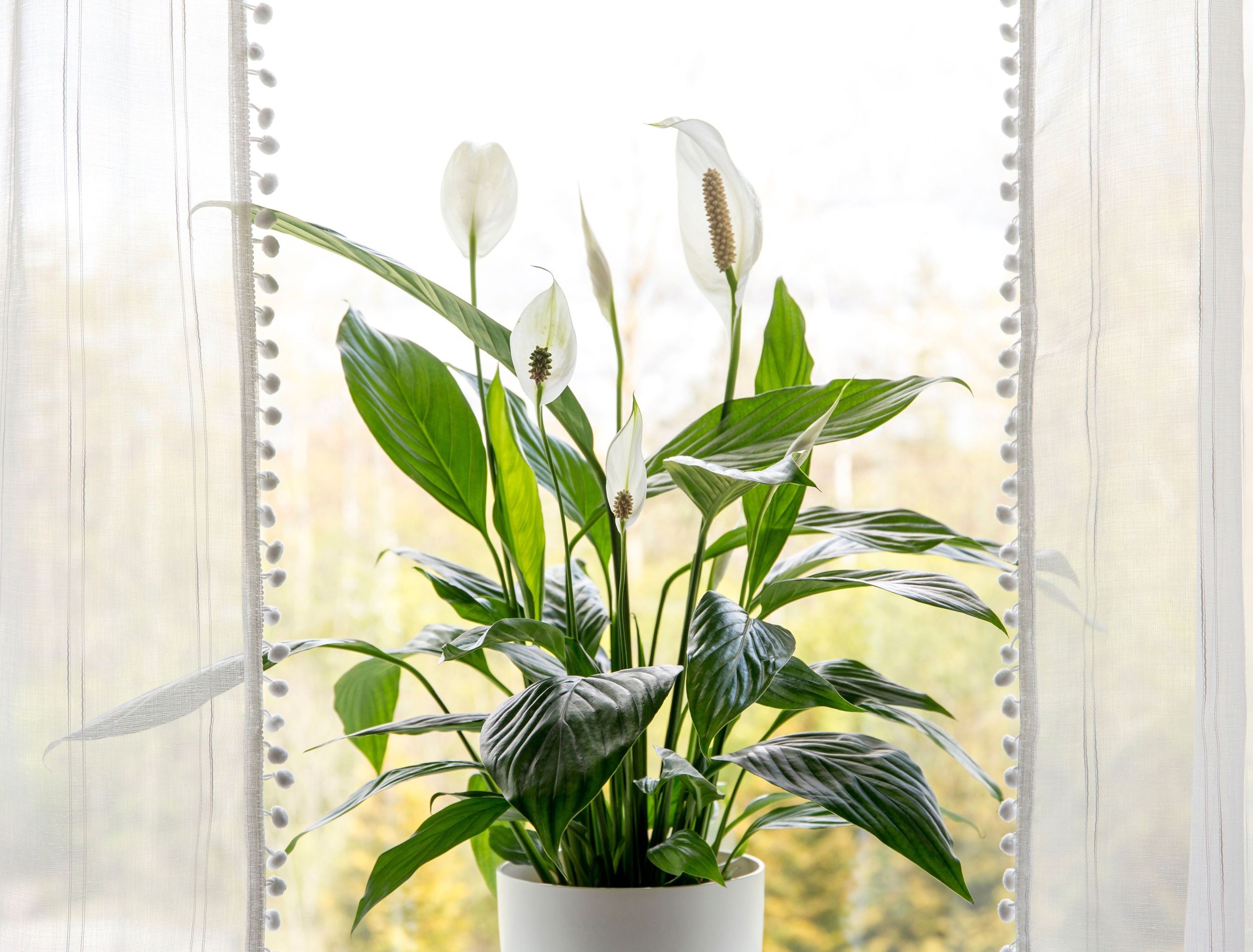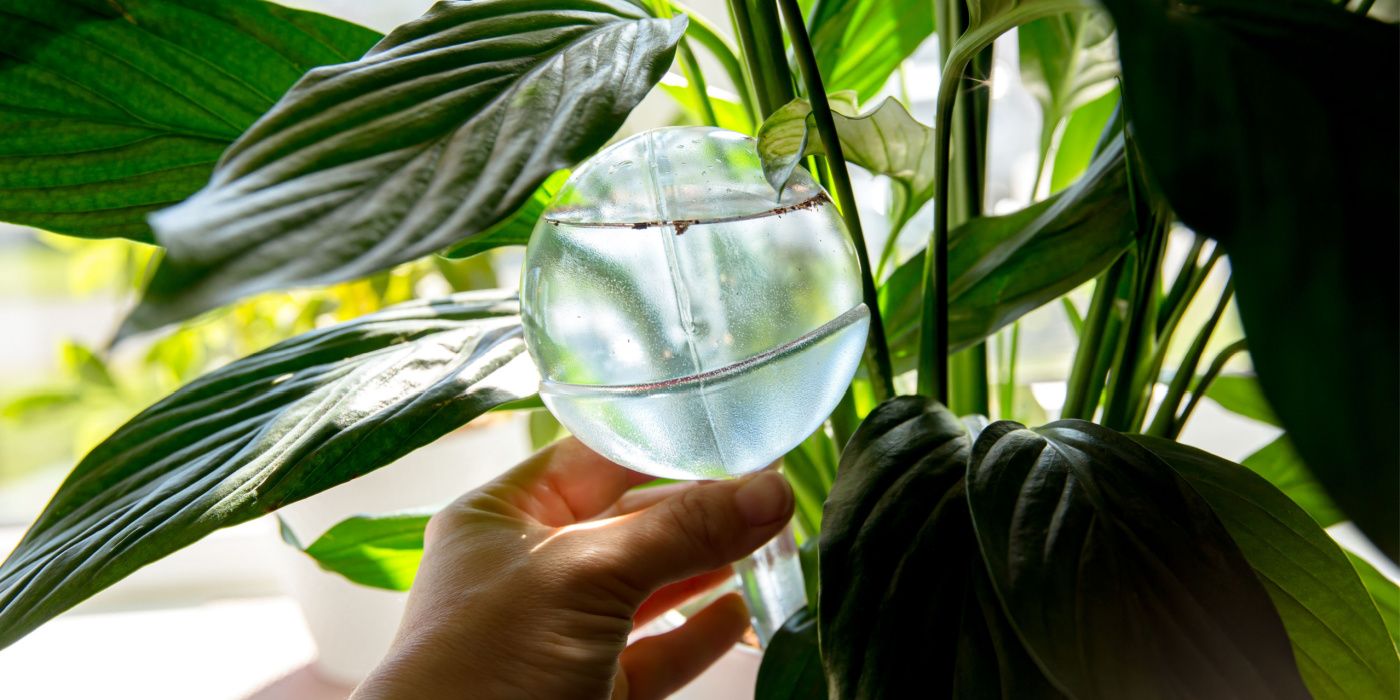Key Takeaways
- Peace lilies have lush foliage and white blooms and can purify the air. Encourage flowering by adjusting lighting, temperature, and humidity levels.
- Peace lily flowers have a unique structure and bloom mainly in early summer. Optimal lighting is indirect, bright light.
- Proper watering techniques are essential to prevent over or underwatering. Balance is key for consistently moist soil. Monitor humidity levels and adjust temperature to promote flower production.
Peace lilies (Spathiphyllum) have a reputation for having very lush foliage with white blooms, and they're popular to have in homes and offices. Peace lily plants are native to the tropical rainforests of southeastern Asia and America and grow wonderfully in humid, warm environments. Their popularity comes partially from their ability to purify the air by removing toxins, and thrive in low lighting.
However, the flowers are the most satisfying thing about this plant. While ornamental, they also indicate that your peace lily is healthy. Getting your peace lily to produce the white flowers can be challenging, and this often leads people wondering how to get a peace lily to bloom? Luckily, there are several things you can do to set the stage to encourage flowering, whether it's adjusting the lighting, increasing the temperature and humidity levels, or watering correctly.
1 Understanding Peace Lily Plant Flowers
Signs of a healthy, happy plant
Peace lily flowers have a unique structure that includes a cream or white-colored spathe — a leaf-like bract — that enfolds a spike of small flowers called a spadix. The elegant and simple oval-shaped spathe, boosts the peace lily's aesthetic appeal.
These plants follow a blooming cycle that usually happens in early summer, but indoor plants can bloom at different points throughout the year when the conditions are right. Several factors influence this cycle, including temperature, light, and care practices.
|
Peace Lily Flower Characteristics |
|
|---|---|
|
Blooming Season |
Early summer with variation for indoor plants. If given the correct care as a houseplant, it can bloom year round. |
|
Bloom Duration |
Lasts up to a month but varies based on climate and care. Typically, it thrives in zones 11 to 12. |
|
Bloom Frequency |
Mainly once a year, but it has the potential to bloom more frequently. |
2 Optimal Lighting for Blooming
Light is critical for encouraging flowering
While peace lilies tolerate low lighting conditions well, they will produce the most flowers when exposed to indirect, bright lighting. You want to avoid direct light as it can scorch the foliage, and not giving them enough light will lead to sparse or no flower production. The ideal setting is a place that gets a balance of enough light to stimulate flowering while having a shield from the harsh, direct sun.
For indoor peace lilies, this means finding a spot by a window that gets diffused light. You can use a sheer curtain to soften direct sunlight exposure, giving your plant optimal lighting conditions.
- An east-facing window is a wonderful option to give your plant bright, soft morning light without harsh afternoon light exposure for two to six hours daily.
Regularly rotating the plant ensures all sides receive equal light, promoting uniform growth and blooming.
3 Proper Watering Techniques
Consistently moist soil without waterlogging
Over and under-watering your peace lilies can affect their health and how much they bloom. If you water too much, this can cause root rot, and this can stunt your plant's ability to create flowers or grow. Not giving them enough water can cause stress, making your peace lily conserve energy and resources, stopping or reducing bloom production.
Balance is vital to properly watering these plants; the goal is to get consistently moist soil that isn't saturated. Use room temperature water to avoid shocking your plant, and water it until you see it run out the bottom of the container.
|
Condition |
Watering Frequency |
Tips |
|---|---|---|
|
Indoors |
Roughly once a week |
Check the top inch of soil and water when dry. |
|
Low Humidity or High Temperatures |
Roughly twice a week |
Water when the top inch of soil dries out. |
|
Winter (Dormancy) |
Every 10 to 14 days |
Reduce frequency as plant growth slows. |
|
After Repotting |
Immediately |
Return to the normal watering schedule after the first immediate watering. |
|
Signs of Over-Watering |
Stop until the top inch of soil dries |
Check for and address any drainage issues. Drainage issues can be due to the potting material used or even the pot material itself. |
|
Signs of Under-Watering |
Water immediately and monitor |
Consistently check the soil moisture level. You can use a moisture meter or simply stick your finger in the soil. |
If you spot a peace lily with brown tips on the foliage, this is a classic sign that you have a problem with humidity levels or are over or underwatering. Adjusting these parameters can help return your plant to a healthy state.
4 Correct Temperature and Humidity
Peace lilies love warm, humid environments
Peace lilies are sensitive to cold drafts and temperature fluctuations, which can cause stress, hindering flower production. Keep your plants away from heaters, air conditioners, and drafty windows to keep the temperature steady.
- They prefer to be in a place where the temperatures stay between 65 and 80 degrees Fahrenheit.
Humidity is also essential, and they thrive with humidity similar to their native tropical rainforest habitat. Increase the relative humidity by grouping plants, misting regularly, adding a humidifier, or setting up a pebble tray for the peace lily to sit on.
- Ideally, keep the humidity levels between 50 and 60 percent.
Regularly monitoring the temperature and humidity and adjusting as needed will help your peace lily grow and increase its chances of blooming.
5 Apply Fertilizer for Energy
Give your peace lily a nutrient boost
Fertilization is vital to encouraging healthy blooms on these plants, but you must apply it carefully. The nitrogen content in the fertilizer formula promotes foliage growth, while phosphorus and potassium are crucial for root development and flowering. You'll use the fertilizer more frequently during spring and summer when your plant actively grows to give it nutrient support and cut back in fall and winter as growth slows.
It's also important to note that peace lilies are sensitive to over-fertilization, which can lead to salt buildup in the soil and potentially damage the plant. Using half the recommended strength of fertilizer can prevent this issue.
|
Fertilizer Type |
Application Frequency |
Special Instructions |
|---|---|---|
|
Balanced Water-Soluble Fertilizer (20-20-20) |
Monthly during spring and summer |
Apply at ½ strength; avoid application in fall and winter |
|
Organic Fish Emulsion |
Every six weeks during spring and summer |
Dilute to ½ or ¼ strength to avoid fertilizer burn |
|
Slow-Release Granular Fertilizer |
Biannually — start and mid-growing season |
Ensure even distribution in the soil; avoid direct contact with roots |
6 Pruning to Encourage New Growth
Cut dead, dying, and diseased foliage
Pruning is critical to learning how to care for a peace lily and promote flower production. It will help you keep the plant's size and shape and encourage it to direct energy toward creating new blooms. To prune your peace lily, you want to remove yellow or brown leaves at the base or where they emerge from the soil. Remove spent flowers when they wilt and start to turn green by cutting as close to the central stalk as possible
Use clean, sterilized, sharp pruning shears or scissors to make all your cuts. Doing so will help you make precise cuts without pulling at the plant and causing more damage. Sterilizing the scissors or shears helps reduce the chances of disease spreading.
Wiping the leaves with a damp cloth helps remove dust and allows for better photosynthesis, which means that the plant has more energy to produce flowers and grow.
Figuring out the best conditions when you're learning how to get peace lilies to bloom may take time, but it's worth the effort. Your plant will repay you by producing brilliant white blooms and growing steadily. If you have someone struggling with their peace lily care, share this with them so they can adjust their environment and set the stage for a healthy, thriving plant!







